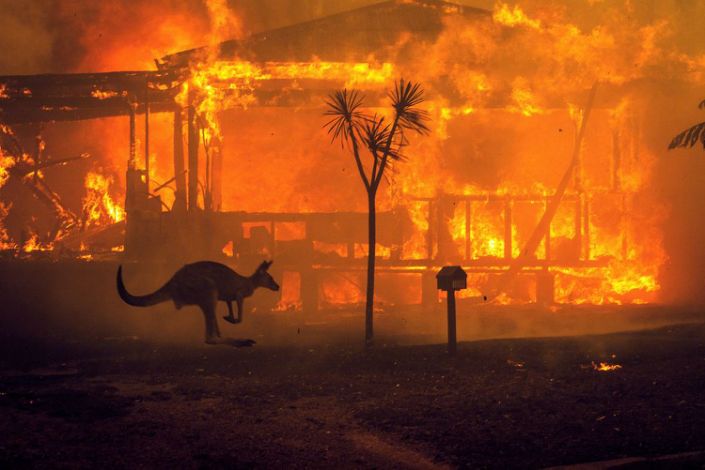News release
From:
Dust storms follow large wildfires
Approximately half of the large wildfires occurring between 2003 and 2020 were followed by dust events — storms of strong winds lifting dust and sand from dry soils, according to an analysis of more than 150,000 wildfires in Nature Geoscience.
Wildfires destroy vegetation, leaving a bare landscape that is a source of dust emissions and is particularly susceptible to wind erosion. Dust emissions from post-fire landscapes have been reported in North America, but global insights to answer questions about post-fire dust event frequency, hotspots, and severity and duration trends, have been lacking. Answers to these questions may aid the development of practical measures that mitigate the societal impacts of wildfires associated with dust storms.
Yan Yu and Paul Ginoux used global satellite measurements on active fires, aerosol abundance and characteristics, vegetation cover, and soil moisture from 2003 to 2020 to provide insights into post-fire dust events. The authors find that about 90% of the large wildfires — defined as those with more than 20 active fires occurring in a 0.1° pixel (approximately 10 kilometres) within seven consecutive days — during this period were associated with a significant reduction in vegetation cover, and that more than 50% of them were followed by dust events in the subsequent 60 days. These dust storms often occurred in savannahs, which made up about half of post-fire dust events. These events can last for days or weeks, largely depending on the severity of wildfires, including their temporal and spatial extent and impacts on vegetation cover. Pre-fire drought conditions were found to increase the occurrence and intensity of post-fire dust events. Throughout the study period, the duration of post-fire dust events increased significantly as a result of intensified regional wildfires and drought conditions due to climate change.
The authors predict that future wildfires and associated dust events may become even more extreme as a result of climate change.



 Australia; International
Australia; International



